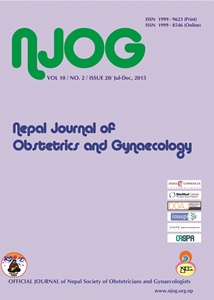Relationship between Abnormal Cardiotocography and Fetal Outcome
Keywords:
Apgar score, cardiotocography, labour, mode of delivery, neonatal resuscitation.Abstract
Aims: This study aimed to determine the frequency of abnormal cardiotocography during labour and to evaluate the significance of these patterns in determining fetal well-being.
Methods: This was cross-sectional study undertaken at sir Ganga Ram Hospital, Lahore from September 2009-September 2010. Hundred admitted pregnant women were enrolled for the study. Admission cardiotocography was done for 30 minutes in left lateral position and labeled as normal, suspicious or pathological. Suspicious pattern cardiotocography was repeated after hydration with 1000ml intavenous fluid and oxygen inhalation, if remained suspicious then action for delivery was taken. Mode of delivery was dependent on stage of labour.
Results: Twenty three women had suspicious CTG traces and 77 had pathological.It was noticed that the percentage of various mode of dellivery were not much different among suspicious and pathological CTG groups with p value 0.668.The Apgar score observed as per mode delivery reveal that there was no significant association between Apgar score at 1 min and mode of delivery with pvalue 0.889. The association of poor Apgar in pathological CTG group was significant with p value 0.006. Fifteen (15.6%) neonates needed resuscitation and 81 (84.4%)did not require resuscitation.
Conclusions: Abnormal CTG influence the fetal outcome, ie poor Apgar score at 1 min and 5 minutes, increased rate of caesarean section and neonatal resuscitation.
Downloads
Downloads
Published
How to Cite
Issue
Section
License
Copyright on any research article in the Nepal Journal of Obstetrics and Gynaecology is retained by the author(s).
The authors grant the Nepal Journal of Obstetrics and Gynaecology a license to publish the article and identify itself as the original publisher.
Articles in the Nepal Journal of Obstetrics and Gynaecology are Open Access articles published under the Creative Commons CC BY-NC License (https://creativecommons.org/licenses/by-nc/4.0/)
This license permits use, distribution and reproduction in any medium, provided the original work is properly cited, and it is not used for commercial purposes.



